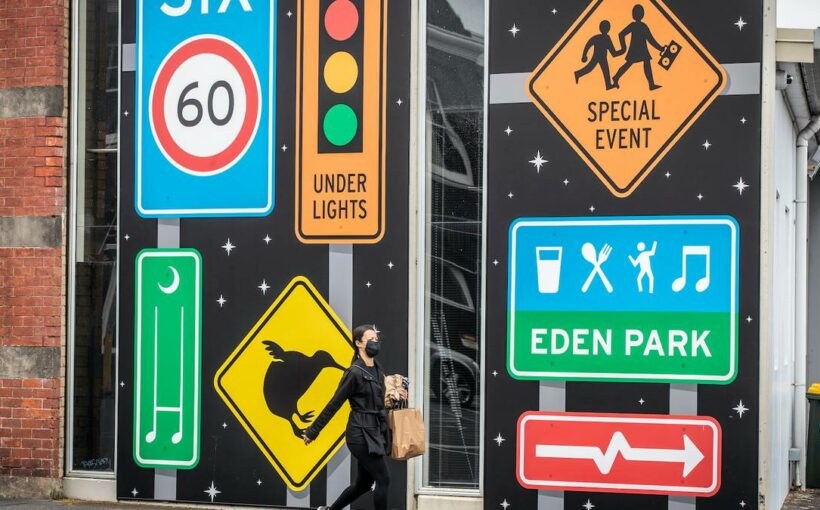Experts say the Government’s new “traffic light” framework shows vaccination rates are paramount in fighting Delta and keeping the country safe from Covid-19.
New Zealand will move to the traffic light system to manage Covid when district health boards have 90 per cent of their eligible populations vaccinated.
When each DHB has hit this target, the new framework will come into effect.
Dr Dion O’Neale – Te Pūnaha Matatini principal investigator and a lecturer in the physics department at the University of Auckland – believes it’s possible for Auckland, and other regions, to reach the 90 per cent target by Christmas.
“Whether we do or not depends on details about the last remaining people to get vaccinated. Things like how many people are going to refuse vaccination, and how easy access is for people who might be willing to get vaccinated but haven’t had good access or incentives until now,” O’Neale said.
“To reduce the risk from travel by Aucklanders to the rest of the country we would therefore want to see high vaccination rates, both within Auckland (reducing onwards transmission), and in the regions where Aucklanders are travelling to (reducing new infections).
“We’d also want to see stable, and hopefully low, case numbers in Auckland before removing any borders to allow wider travel. If case numbers within Auckland are still going up, for a given level of vaccination, then we would expect the same pattern to quickly develop in other regions if there was no longer a barrier to keep cases within Auckland,” he said.
“One important factor to keep in mind is that a vaccination target of 90 per cent only applies to the eligible population of 12 and up. Aotearoa has a relatively young population, especially compared with other countries. Vaccinating 90 per cent of over 12s only translates into 76 per cent of the total population – this would mean there are still about 1.2 million people unvaccinated.”
https://www.instagram.com/p/CVO5pkvswU6/
A post shared by The New Zealand Herald (@nzherald)
Dr Dianne Sika-Paotonu – immunologist, associate dean (Pacific), head of the University of Otago Wellington Pacific Office, and senior lecturer, pathology & molecular medicine for the University of Otago Wellington – said we’re continuing to break records in New Zealand, but ”just the wrong ones”.
”The highest daily number of Covid-19 cases ever recorded in our country was today, at 129 community cases. The highest hospitalised number of cases was also recorded today, at 51,” she said.
“The shift in focus for investigations relating to unlinked mystery cases of unknown origin speaks to a system that’s under pressure and stretched.
“A high degree of risk remains for all in Aotearoa New Zealand, but especially for our most vulnerable communities. Vaccination rates of at least 90 per cent and beyond fully vaccinated – including for Māori and Pacific, are paramount to fighting Delta and keeping everyone safe from Covid-19.
“Please get vaccinated, please get tested, please follow the alert level rules, and importantly, help others around you to do the same.”
Dr Paula O’Kane – senior lecturer in human resource management (HRM), University of Otago Business School – said the traffic light system gives some certainty to retail and hospitality, as well as to organisations generally, about how business will operate while Delta is circulating.
“Across all three levels, it still leaves the hospitality and events sector being asked to decide whether to ‘police’ vaccination on their premises. This is a potentially difficult situation, with staff being left open to customer criticism and/or abuse.
“The Government should consider mandating certificates instead, taking the controversial decision away from already overstretched small businesses.
”It also doesn’t answer the question about whether staff are included in the vaccination mandate – can an unvaccinated member of staff serve in a premise operating a vaccination certificate check?” O’Kane said.
“It is now critical that workplaces ensure that their working from home policies are updated or in place for contingencies across all three levels. They must provide their employees with adequate equipment, software, hardware and internet access, to do their job safely, and that they plan for how to communicate effectively with their staff.
“Health, safety, and wellbeing are integral, particularly mental health and wellbeing, which we know has suffered through these latest lockdowns.”
Source: Read Full Article

/cloudfront-ap-southeast-2.images.arcpublishing.com/nzme/M5ZFL723NXMIJ7SOHYO56G2X3A.jpg)
/cloudfront-ap-southeast-2.images.arcpublishing.com/nzme/B6SLJQP4NHPGJFGNYCDDVEW4GI.jpg)
/cloudfront-ap-southeast-2.images.arcpublishing.com/nzme/YQWQJVBWFR4YZCCXQLTXET4R3U.jpg)